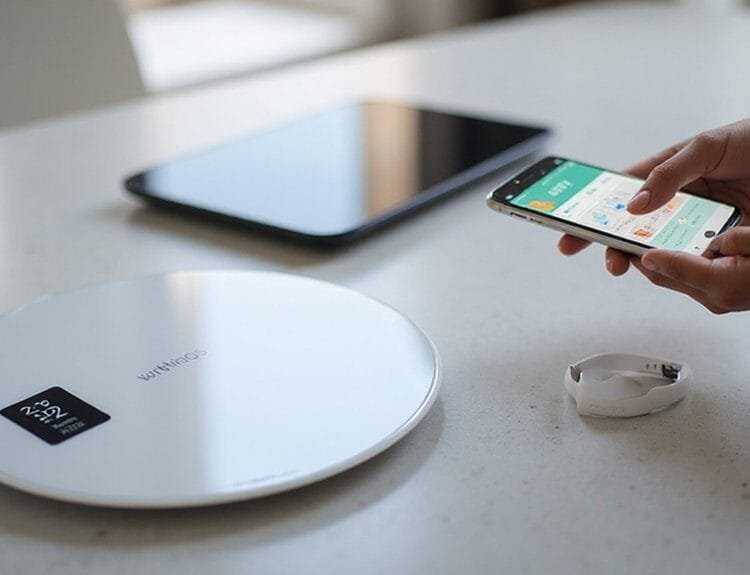Electric kettles boil water faster than stovetop models due to their higher wattage and more effective heat transfer mechanisms. With an average boiling time of just 3-4 minutes for 1 liter, they outperform stovetop kettles, which can take 6-11 minutes. This efficiency also translates to lower energy consumption. If you want to understand the various factors that influence boiling speed and kettle performance, you’ll find more insights in the following sections.
Key Takeaways
- Electric kettles boil water significantly faster, taking about 3-4 minutes for 1 liter compared to 6-11 minutes for stovetop kettles.
- The higher wattage of electric kettles enhances their boiling speed, making them more efficient for quick meals.
- Electric kettles typically save around 2 minutes and 24 seconds for 1 liter and nearly 4 minutes for 1.7 liters compared to stovetop models.
- Faster boiling times in electric kettles cater to fast-paced lifestyles, while stovetop kettles appeal to traditional cooking methods.
- Overall, electric kettles are more energy-efficient, consuming 10% less energy due to their quicker boiling times.
Understanding Kettle Technology


While kitchen technology continues to evolve, kettles represent a fascinating intersection of electrical engineering and practical design. Electric kettles boil water through an innovative heating element that converts electrical energy into heat, enabling faster boiling compared to traditional stovetop models. The wattage directly influences boiling time, with higher-powered units generating heat more rapidly and efficiently. Advanced electric kettles incorporate sophisticated features like automatic shut-off mechanisms and temperature control, enhancing both safety and energy efficiency. These technological improvements allow you to heat water precisely and quickly, transforming a simple task into an optimized experience. By understanding the intricate design principles behind electric kettles—from their insulated double-walled construction to their responsive heating systems—you’ll appreciate how modern engineering has revolutionized this everyday kitchen appliance.
Boiling Speed Comparison
Speed defines the core difference between electric and stovetop kettles when it comes to boiling water. Electric kettles consistently outperform stovetop models in boiling water quickly, demonstrating significant time savings across different water volumes. When boiling 1 liter, you’ll save approximately 2 minutes and 24 seconds with an electric kettle, and for 1.7 liters, the time savings extend to nearly 4 minutes.
The superior performance stems from higher wattage operation and advanced design. Electric kettles minimize heat loss through insulated construction, enabling more efficient energy transfer. Their precise engineering allows for rapid water heating, making them a preferred choice for those seeking quick, energy-efficient water boiling. The technological advantages translate directly into faster, more streamlined boiling processes compared to traditional stovetop methods.
Energy Efficiency Breakdown


Building on the rapid boiling performance previously discussed, the energy efficiency of electric kettles emerges as another compelling advantage. Electric kettles operate at approximately 80% energy efficiency, considerably outperforming stovetop kettles‘ 70% efficiency. The direct heat transfer mechanism minimizes heat loss, allowing electric kettles to boil water more efficiently. High-quality models with insulated designs further optimize energy consumption, ensuring minimal thermal waste during the boiling process.
When comparing energy performance, electric kettles demonstrate clear technical superiority. Their streamlined design eliminates peripheral heat dispersion around burners, concentrating thermal energy precisely where needed. You’ll find that not only do electric kettles boil faster, but they also consume less energy, making them a more environmentally conscious and economical choice for preparing hot beverages and meals.
Heat Transfer Mechanisms
Because heating efficiency defines a kettle’s performance, electric and stovetop kettles employ distinctly different heat transfer mechanisms that dramatically impact their operational effectiveness. Electric kettles leverage direct resistance heating, where a high-resistance coil positioned at the water-filled base generates heat through electrical current, transferring thermal energy rapidly and uniformly. This mechanism guarantees more precise temperature control and faster boiling times compared to stovetop kettles. The electric kettle’s insulated design minimizes heat dissipation, concentrating thermal energy directly into the water. Conversely, stovetop kettles rely on external heat sources like gas or electric burners, which can result in less efficient heat transfer and longer boiling periods. The strategic positioning of the heating element in electric kettles allows for maximized water contact, enabling quicker and more consistent temperature increases.
Practical Performance Testing


When comparing the real-world performance of electric and stovetop kettles, empirical testing reveals stark differences in their water-heating capabilities. You’ll find that electric kettles consistently outperform stovetop models in practical performance testing. For 1 liter of water, an electric kettle boils water in 4 minutes and 10 seconds, compared to a stovetop kettle’s 6 minutes and 34 seconds. The time savings become even more pronounced with larger volumes: a 1.7-liter test showed electric kettles completing the task nearly 4 minutes faster. These efficiency gains stem from direct heat transfer mechanisms, allowing electric kettles to convert energy more effectively. Their superior design translates to approximately 10% greater energy efficiency, making them a technically advanced choice for quickly and economically boiling water across various volumes.
Factors Affecting Boiling Time
Since multiple variables interact to determine water boiling time, understanding the key factors becomes essential for enhancing kettle performance. Your kettle’s wattage directly influences heating capability, with higher-powered models boiling water more rapidly. Initial water temperature considerably impacts boiling time; cold water requires more energy to reach the boiling point compared to pre-warmed water. The volume of water you’re heating plays a vital role, with smaller quantities heating faster—typically 1 liter boils in about 4 minutes. Your heating element’s efficiency matters too, as high-quality elements transfer heat more effectively. Environmental factors like altitude can also modify boiling dynamics, with higher elevations requiring longer heating times due to lower atmospheric pressure. Strategically managing these temperature settings guarantees peak kettle performance.
Kitchen Space and Design Considerations
Although kitchen real estate remains a precious commodity, selecting the right kettle demands careful spatial evaluation. Electric kettles typically occupy more counter space compared to their stovetop counterparts, which can challenge space management in compact modern kitchens. You’ll want to contemplate the design considerations that impact your kitchen decor and functional requirements.
When evaluating electric kettles, note their minimalist aesthetic that complements contemporary spaces, while stovetop kettles offer classic visual appeal. Your placement strategy matters: electric kettles require electrical outlets, whereas stovetop kettles provide placement flexibility across various heat sources. Strategic storage becomes critical—when not in frequent use, electric kettles can be conveniently tucked into cabinets, preventing unnecessary counter clutter and maintaining an organized kitchen environment.
Pros and Cons of Each Kettle Type
Kitchen design considerations naturally lead us to examine the core performance characteristics of electric and stovetop kettles. Electric kettles excel in boiling time, achieving water boiling in 3-4 minutes, while stovetop kettles require 6-11 minutes. Electric models offer superior safety features with automatic shut-off mechanisms, whereas stovetop kettles demand manual monitoring. Energy efficiency favors electric kettles, consuming approximately 10% less energy due to reduced heat loss.
Portability distinguishes these kettle types: electric kettles operate anywhere with an outlet, but stovetop kettles require specific heat sources. Durability favors stovetop kettles, constructed from robust materials like stainless steel, enabling use during power outages. Your choice depends on prioritizing speed, safety, energy efficiency, and adaptability to different kitchen environments and potential emergency scenarios.
Making the Right Choice for Your Home
How do you navigate the nuanced decision between electric and stovetop kettles for your home? Consider your specific needs by evaluating kitchen space, lifestyle, and boiling preferences. Electric kettles offer remarkable convenience with faster boiling times and energy-efficient performance, minimizing heat loss during the process. They’re ideal for quick, precise boiling and include safety features like automatic shut-off mechanisms. Stovetop kettles appeal to traditionalists who appreciate manual brewing methods and don’t require dedicated counter space or electrical outlets. Your choice hinges on technical considerations: speed (3-4 minutes versus 10 minutes), energy consumption, and personal cooking habits. Assess your kitchen’s infrastructure, daily routines, and thermal requirements to determine which kettle type aligns best with your functional and aesthetic preferences.
Frequently Asked Questions
Are Electric Kettles Faster Than Stove Top?
Yes, electric kettles’ efficiency surpasses stovetop methods due to superior heat distribution and material impact. They heat water faster, ensuring safety and convenience while consuming less energy, making them the preferred choice for quick boiling.
What Are the Disadvantages of an Electric Kettle?
You might think electric kettles are the pinnacle of convenience, but they come with safety concerns, higher maintenance tips, potential noise levels, and energy efficiency issues, alongside price comparisons and material quality that often disappoint.
What Boils Water Faster Electric or Gas Stove?
When considering boiling efficiency, electric kettles excel due to superior heat transfer and lower energy consumption. Their materials enhance temperature control, offering user convenience, especially for varying water capacities, considerably speeding up the boiling process compared to gas stoves.
Why Are Electric Kettles Slower in the US?
Electric kettles in the U.S. are slower due to power limitations, voltage differences, and energy efficiency design variations. Regulatory standards prioritize safety, impacting heating elements and contributing to longer boiling times influenced by usage habits.
Do Some Kettles Boil Faster Than Others?
Yes, some kettles do boil faster than others. Factors like kettle materials, water temperature, kettle capacity, and heating elements influence boil time, while energy efficiency and design features can further enhance performance.
Is the Speed of Boiling Water Affected by the Material of the Kettle Used?
The speed of boiling water can indeed be influenced by the material of the kettle. For instance, kettles made from metals typically heat water faster than ceramic or glass. In a different context, ceramic and titanium hair straighteners compared thoroughly highlight how material choice affects performance and efficiency, much like kettles.
Conclusion
In the grand race of boiling, electric kettles often sprint ahead, powered by efficiency, while stovetops take a more leisurely approach, savoring the warmth of tradition. Just as the tortoise and the hare remind us, speed isn’t everything; consider your kitchen’s layout and your personal preferences. Ultimately, whether you choose the electric hare or the stovetop tortoise, each kettle serves a unique purpose, ensuring your tea time remains a delightful ritual tailored to your home.





